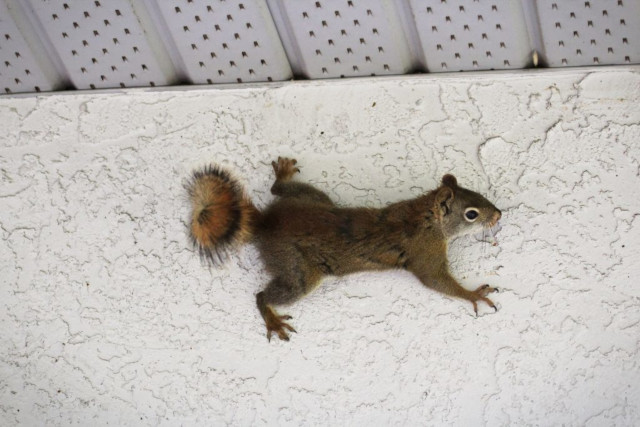A lot of people consider squirrels harmless, adorable and tend to even feed them. They do not know that squirrels are actually rodents, with all the rodent qualities like ever growing incisors but that squirrels were never native to urban environments at all. They were introduced in the late 1700s during the enlightenment. At that time wild animals in the city were considered dirty and a sign of plague. Killing them was normal and considered a way of stemming disease. They were not wrong. However, when the enlightenment came the enlightened wealthy people of the city decided that in order to help young boys grow a sense of kindness, as at the time young boys in the city, often homeless and hungry, where a terror to anyone with money, they would introduce cuddly animals to the city in the form of squirrels. The squirrel was introduced into the city to help the boys be kind to animals and in turn to other humans. This had the reverse effect, filling the city with rapidly multiplying squirrels with no predators in sight. This caused terrible repercussions in cities all over North America.

Roof vents help keep your attic at the right temperature. The problem is they tend to be made of plastic or aluminum. The roof vent is very necessary to have but is also an easy access point for wildlife, especially squirrels to enter your home. There are ways to prevent this, using a steel cage to cover the vent and bolt it into the roof will stop squirrels and other animals from popping the vents loose and getting into your attic.
The roof edge is the place where everything collects, rain, dirt and snow sit on the roof edge bulling down the gutters and damaging the roof with vegetation growth. This can warp the wood and cause the roof edge to split open, creating a perfect access point for a squirrel. To deal with this issue you may want to call in a roofer to replace the warped wood, but you can also seal the area off with steel mesh that can be bolted down and will do a great job of protecting the entryway from wildlife infestation.
The soffits of your roof are on the bottom of the roof. They are used to seal off all the work done on the house and protect it from weather and supposedly wildlife. This does not work so well when your soffits are made of aluminum or wood. If they are old they may be straightforward to break through or tear away. Vinyl soffits are a little better and look good for longer but a squirrel can chew through that as well. To protect them you can install soffit sealers or, if you don’t want to spend the money, steel mesh bolted to the roof to cover all the soffits around your home. This will do a lot to prevent squirrels from entering your attic.
The gable vent, a fixture of the old architecture of the early 1900s. These are vents intended to do what roof vents do better, they are great to have as an addition to roof vents as they do circulate air in the attic as well but they are often made of wood strips that any animal can break away or chew through and offers an easily accessed large opening into the attic. For this reason, most new houses have a fake gable vent to give the look of the old with the protection of the new. You can seal the vent with steel mesh or with a large steel cage. Either way, it will be much harder for animals to breakthrough.

